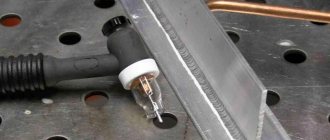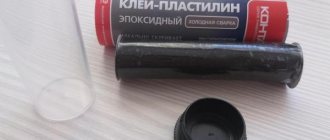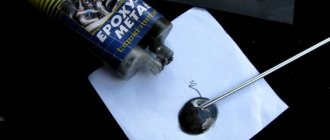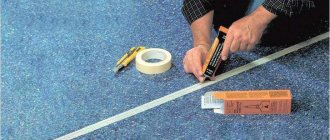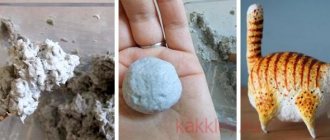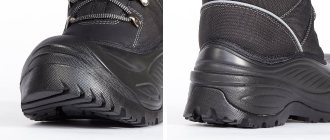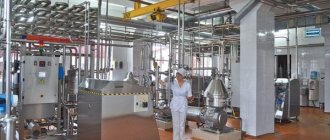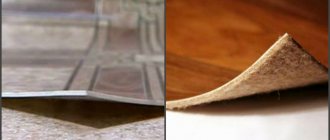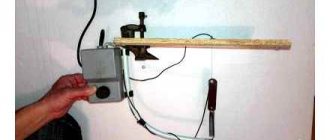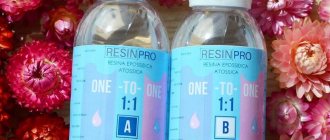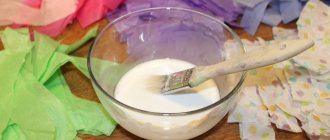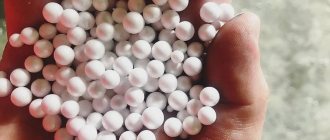Select the appropriate adhesive according to the markings on the material. Liquid, contact, epoxy and hot-melt adhesives can be used to bond plastics. It is important to clean the plastic surface, prepare the material and tools and wait for the setting time indicated on the pipe. Cosmofen Plus-S, Permatex Super Glue, Henkel Super Moment Maxi, Mastix Poxy Termo, Titan were recognized as the best compositions of plastic adhesives.
Breaking plastic products at home is not uncommon. If this happens to you, take the time to throw it away, it's an easy fix. To stick plastic permanently, you need to understand its type, choosing an adhesive material based on it.
Determining the type of plastic
In order to reliably glue plastic, you first need to find out what kind of plastic the object is made of. Knowing the plastic, you can choose the most suitable adhesive for it.
All manufacturers put recycling symbols on their plastic products - this is the well-known Recycling Triangle - a triangle with arrows on the sides, symbolizing the reuse of materials.
The triangle contains numbers from one to seven. Often the numbers are supplemented by an abbreviation. These designations are used to determine the type of plastic.
What does the marking on plastic mean?
- PET low density polyethylene or polyethylene terephthalate. It is mainly used for packaging or packaging food products. Available in the form of film, bags or transparent containers for liquid and bulk goods, as well as drinks.
- HDPE compacted low pressure polyethylene. Used for the production of shrink film and packaging bags.
- V (PVC) polyvinyl chloride is a non-food plastic used for the manufacture of strong and durable items, such as household buckets, metal-plastic window frames, and linoleum.
- LDPE Low density polyethylene of high pressure. Used in the production of bottles for drinks and dairy products, packaging bags, toys, cold water pipes.
- PP polypropylene. Plastic is not chemically active, heat-resistant (up to 150 °C), and is most widely used in the production of medical goods, heat-resistant dishes and household utensils, toys, pipes and fittings for hot water, and much more.
- PS polystyrene. Also food grade plastic, it is used to make disposable tableware, household utensils, and kitchen appliance housings. If it is foamed, it forms an excellent porous heat insulator - polystyrene foam, used in everyday life and in construction work.
- O Other (others) - materials that are not intended for recycling, for example, with inclusions of metal, paper or other substances). This also includes plastics that do not belong to one of the six groups.
PS - polystyrene
To reliably glue plastic, you need to carefully examine the markings on the product and select an adhesive intended for polymers of this group. There is another way to determine the type of plastic - a small piece of it must be set on fire. Each type burns with a characteristic smell and type of flame. To reliably use this method at home, you need to gain considerable experience.
Technical characteristics of PVC products
PVC (polyvinyl chloride) is a polymer that is an environmentally friendly material, has a low melting point and is susceptible to low temperatures. These two somewhat negative properties are offset by the durability and high strength of the material.
The physical properties of the polymer give PVC pipes the following qualities:
- High ring stiffness. The pipes are resistant to water hammer and are able to maintain pressure in the system up to 120 atmospheres.
- Do not deform when exposed to high temperatures. During heating to the maximum permissible temperatures, the pipes increase by only 5%.
- Low heat resistance. The rigidity of the adhesive PVC pipe is lost when the temperature reaches 78 ºC. In this regard, the use of such pipes in pipeline systems where the water temperature may exceed 40 ºC is not permitted.
- Instability to low temperatures. Polyvinyl chloride is able to function down to -15 ºC. At lower temperatures the material begins to deteriorate. Therefore, if the main line is laid in cold regions, then it needs additional insulation.
The operational properties of the pipes will be as follows:
- Long operating time without interfering with the system for cleaning purposes. Siltation is minimized due to the very smooth inner walls.
- It is the best solution for the construction of sewer systems. Preference is given to these pipes, again, due to the smooth internal walls and their small thickness.
- Long service life. In particular, this is achieved due to the material’s resistance to ultraviolet radiation.
Glue marking
Tubes with glue are also marked, it’s just a pity that the designation system does not always coincide with the designations in the triangle on the plastic product. Most often you can see the following symbols on the tube:
- PC-polycarbonate (used for covering greenhouses and canopies).
- ABS is an acrylonitrile copolymer.
- PP polypropylene.
- PPMA organic glass for general purpose.
- PE is a well-known polyethylene.
- PVC is another familiar one - vinyl, or polyvinyl chloride.
- PS – polystyrene.
- PA 66 - polyamide.
- PUR polyurethane.
Adhesive for acrylic (plexiglass)
If you are not an expert in organic chemistry, then most likely, further study of labeling at home will not be successful. It is better to read in the user manual, which must be included with the tube, which plastics can be glued with it.
Types of adhesives
The variety of plastics used in everyday life corresponds to an equally wide variety of manufactured compositions and methods of their use.
How to glue plastic
To dissolve the surface layer of a material, it is necessary to destroy the chemical bonds between the molecules. For this purpose, special substances are used - strong solvents. Each solvent is suitable for its own group of plastics, and may not even leave a trace on a material from another group. The basis of each adhesive composition is such a solvent. In addition, the composition may include:
- a hardener that promotes drying;
- filler - dissolved molecules of the substance for which the glue is intended.
One of the strongest solvents is dichloroethane. It is used to glue polystyrene and plexiglass.
Dichloroethane
Depending on the method of use, the products are divided into several groups:
- liquid;
- contact;
- reactionary;
- hot melt adhesives.
Liquid
Liquid ones are widely used in everyday life; they are easily and simply used at home for gluing plastic that has a porous structure. They are produced both on the basis of an organic solvent and on a water basis. They are applied to surfaces that are pressed against each other for a time sufficient for the base to evaporate. After this, the adhesive layer hardens, forming a connecting seam. A typical example is PVA glue; it can be used to glue not only linoleum, but also wood at home.
Contact
Bonding takes place in two stages:
- the surfaces to be glued are lubricated with a thin layer, which dissolves the surface layer of plastic, softening it and facilitating contact with another surface;
- After a few minutes, the parts are pressed against each other with force, the softened layers are mixed, the solvent evaporates and a seam is formed.
Moment for plastic
This is how Moment, BF-2 and others work. They can be used to glue polystyrene and other plastics together at home. They contain toxic substances, so you need to work in a well-ventilated area and prevent drops from coming into contact with the skin or mucous membranes.
Reactionary
One-component reactive agents dissolve the bonded material very quickly and harden just as quickly. These are such well-known brands as Secunda, Superglue and their analogues. The seam is strong and rigid.
Two-component ones consist, respectively, of two components stored separately from each other:
- hardener;
- fixative
Two-component adhesive
The components are mixed immediately before use and applied to the surface, where the mixture hardens to form a compound. The basis is epoxy or polyester resins. The seam at home turns out to be very durable. A characteristic feature is that complete hardening takes quite a long time, and the seam gradually increases both strength and fragility.
Hot melt adhesives
This group includes substances that exhibit their properties when heated to 110-120 °C. To use, you need a special glue gun with a heating element. Differs in precision of application. In addition to plastic, it can be used to glue wood, fabric, and paper together at home.
Tips for use
The glue must be applied to a clean, grease-free surface.
Before applying glue for plastic and ensuring strong fixation of plastic to plastic or other material, it is necessary to carry out a number of preparatory measures:
- degrease the surface (you can use acetone);
- sand the areas of future gluing to ensure roughness;
- mix the glue in the required proportions (if required by the instructions);
- use brushes made of synthetic fibers rather than natural ones;
- apply the product in a thin layer to avoid the adhesive layer coming out;
- press the parts firmly, but without excessive load.
Valera
The voice of the construction guru
Ask a Question
To achieve the best gluing result, the specified curing time must be maintained before and after the compression process. If there is no marking on the plastic, you can apply a drop of glue to an inconspicuous area of the product and monitor the reaction.
How to glue plastic tightly at home
After the type of plastic has been determined and the appropriate substance has been selected, you should:
- Thoroughly degrease the surfaces to be bonded. To do this, use alcohol, a degreaser or a soap solution (only laundry soap);
- To glue objects more reliably, you need to increase wettability. To do this, treat the surface with a velvet file or fine sandpaper;
- Mix two-component reactive substances only after completing the preparation of parts;
- do not use brushes with natural bristles;
- Apply enough adhesive so that when pressing the workpieces, the excess is not squeezed out beyond the gluing zone.
The parts should be pressed so as to prevent their displacement in the gluing plane relative to each other.
How to glue plastic together
The most common question is how to glue plastic together. If you want to solve the problem once and for all, a little preparation is required. First, try to tentatively answer the following questions.
- What type of plastic is this?
- What is the surface condition? (raw, painted, etc.)
- What is the geometry of the adhesive surface? Are these sheet metal or injection molded parts?
- What can be said about the type and degree of load on the area being glued?
- Where are glued plastic parts supposed to be used?
Of course, not all questions and not always have answers. But the information obtained in this way is very important for choosing a suitable adhesive. Having determined the type of plastic, we study its characteristics and only after that we look for a suitable adhesive.
Main types of plastic:
- A.S.A.
- ABS,
- PA,
- PBT
- PC,
- PE,
- PAT,
- POM,
- PP,
- PS,
- PS,
- PTFE,
- LDPE,
- PVC.
How to achieve maximum effect when gluing plastic parts
To ensure maximum effect when gluing plastic at home, you should:
- accurately determine the material and select the appropriate adhesive for it;
- carefully follow the instructions for use;
- wait for the required time for the seam to gain strength and do not try to use the product ahead of time;
- for outdoor use or for items used in high humidity conditions, you need to choose a waterproof brand;
- despite the declared heat resistance of the adhesive, the parts themselves may not survive this temperature;
- If there is no marking on the product, then you can try dropping a drop of adhesive in an inconspicuous place and see if the material dissolves.
Epoxy resin
Epoxy glue produces one of the strongest bonds and is compatible with many types of plastics.
Panels
PVC panels have become widespread due to their sufficient strength, water resistance, resistance to temperature changes, and low cost. The fastening of such a facing coating is carried out not only with glue, but also mechanically on the sheathing. The adhesive method is used when the base is level and without any defects.
The main properties of the glue in this case are resistance to temperature changes, moisture resistance, and excellent viscosity. Most often, liquid nails, Moment-Montazh or Titanium are used to fasten panels.
What affects the reliability of gluing
The reliability of the seam is influenced by a number of conditions. All of them are important, and failure to comply with any one can lead to the fact that what is glued at home will fall off, despite compliance with all the others. So:
- Compliance of the product material and adhesive composition.
- Correspondence of the type of adhesive composition to the magnitude of the forces that the connection will experience. The direction of these efforts is equally important. Thus, compounds that produce rigid seams are not suitable for repairing, for example, shoes - after all, the sole will bend and twist during use, despite the fact that the tensile force will be small. At the same time, this composition can successfully glue, say, a hook to glass, and hang tens of kilograms on it.
- Compliance with application technology. Everything is important here - how many seconds or minutes the surfaces need to be compressed, and how to degrease them, and how long to keep the parts pressed against each other. All this depends on the properties of a particular “plastic-glue” pair, is described in detail in the instructions and must be followed verbatim. A deviation of one second in the exposure time or premature start of use of the product can lead to secondary failure.
- Mechanical part of the process. It is important to thoroughly clean the surface from dust and roughen it. In addition, the direction of pressing the parts against each other must be perpendicular to the surfaces being glued. You should not allow the parts to move mutually after pressing - this will also lead to failure.
Gluing plastic tightly is not so easy. Carefully following simple rules by the home craftsman will allow you to obtain strong and durable connections. The main thing is not to forget about safety precautions: do not inhale vapors of the adhesive and do not allow it to get into food, skin or mucous membranes. If accidentally swallowed, consult a doctor immediately, making sure to take the tube with you.
Features of PVC products
Polyvinyl chloride is a thermoplastic solid material with a low melting point. Most products require heat when gluing. This can be done using a hair dryer.
PVC adhesive may vary in composition:
- Two-component - the glue comes in the package separately from the hardener. The components must be mixed before use. The diluted composition, in most cases, does not lose its properties within 8 hours. After this, if necessary, you can add hardener again and continue working.
- One-component - adhesive, ready for use. The hardener is already present in its composition. The time of use is limited only by the expiration date - usually no more than 6 months from the date of manufacture.
Both types are effectively used for PVC. Which one will be best for a particular case is determined individually by the master. It is believed that two-component adhesives provide a higher quality connection. Among other things, the following properties are taken into account:
- adhesion;
- plastic;
- waterproof;
- heat resistance.
Important! When choosing an adhesive, you need to pay attention to the label on the packaging - it should indicate that the adhesive is suitable for PVC.
What kind of glue is needed depends on the material you are working with. Let's look at the most common options for products held together using adhesive joints.
